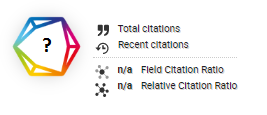DINAMIKA SISTEM EKONOMI SIRKULAR BERBASIS MASYARAKAT METODE CAUSAL LOOP DIAGRAM KOTA BENGKAYANG
DOI:
https://doi.org/10.46984/sebatik.v25i1.1279Keywords:
Dinamika Sistem, Causal Loop Diagram, Ekonomi Sirkular, Pembangunan Berkelanjutan, Kelola SampahAbstract
Ekonomi sirkular merupakan sebuah konsep ekonomi yang mengimplementasikan tujuan pembangunan berkelanjutan yang terkait dengan tingkat konsumsi dan produksi yang bertanggung jawab dan berkelanjutan. Konsep ekonomi ini memberikan sebuah solusi dari permasalahan sampah yang diproduksi oleh masyarakat, dengan tujuan membuat produk baru dari sumber daya sampah yang bermanfaat dan bernilai ekonomi. Tujuan penelitian ini adalah mengidentifikasi permasalahan tata kelola sampah dalam kontribusinya terhadap perekonomian daerah dan lingkungan hidup. Metode penelitian yang dipergunakan adalah metode kualitatif dinamika sistem (system dynamics) pendekatan Causal Loop Diagram. Teknik analisa data dengan menggunakan metode triangulasi yaitu wawancara mendalam dengan key informan, observasi partisipatif dan dokumentasi. Masih perlunya waktu secara bertahap (delay time) dalam mengimplementasikan konsep ekonomi sirkular berbasis masyarakat di kota Bengkayang terutama terkait dengan change behavior. Perlu adanya tindakan kolaboratif antar stakeholder seperti masyarakat umum, pemerintah daerah, pengusaha dan aktifis lingkungan hidup dalam mengimplementasikan sistem ekonomi sirkular. Program yang dapat dilakukan adalah dengan membentuk bank sampah pada setiap desa dan bank sampah induk dari Dinas Lingkungan Hidup dan Kehutanan, menerapkan konsep 3R ( reduce-reuse-recycle ) untuk setiap rumah tangga serta pendampingan dan pelatihan mengenai tata kelola sampah yang bertanggung jawab di setiap desa, sekolah dasar hingga SMA/SMK. Pentingnya keterlibatan para stakeholder dalam membentuk partisipasi masyarakat untuk menerapkan sistem ekonomi sirkular hingga masyarakat mampu secara mandiri.
References
De Angelis, R. and De Angelis, R. (2018) Sustainable Development, Corporate Sustainability and the Circular Economy, Business Models in the Circular Economy. doi: 10.1007/978-3-319-75127-6_2.
Babader, A. et al. (2016) ‘A system dynamics approach for enhancing social behaviours regarding the reuse of packaging’, Expert Systems with Applications, 46, pp. 417–425. doi: 10.1016/j.eswa.2015.10.025.
Bappeda (2020) ‘Profil dan Analisis Pembangunan Daerah Kabupaten Bengkayang’, in Bappeda Bengkayang.
Busu, M. and Trica, C. L. (2019) ‘Sustainability of Circular Economy Indicators and Their Impact on Economic Growth of the European Union’, Sustainability (Switzerland). doi: doi:10.3390/su11195481.
Creswell (2014) Research Design : qualitative, quantitative and mixec methods approaches. SAGE Publications Inc.
Dercon, S. (2014) ‘Is Green Growth Good for the Poor?’, The World Bank Research Observer, 29(2), pp. 163–185. doi: 10.1093/wbro/lku007.
Elamin, M. Z. et al. (2018) ‘Analisis Pengelolaan Sampah pada Masyarakat Desa Disanah Kecamatan Sreseh Kabupaten Sampang’, Jurnal Kesehatan Lingkungan, 10(4), p. 368. doi: 10.20473/jkl.v10i4.2018.368-375.
Evans, S. et al. (2017) ‘Business Model Innovation for Sustainability: Towards a Unified Perspective for Creation of Sustainable Business Models’, Business Strategy and the Environment, 26(5), pp. 597–608. doi: 10.1002/bse.1939.
Forrester, J. (2009) ‘Some basic concepts in system dynamics’, Sloan School of Management, Massachusetts Institute of Technology, pp. 1–17. Available at: http://www.systemsmodelbook.org/uploadedfile/238_63f73156-02df-4d87-b0c6-c286a7beec26_SomeBasicConcepts.pdf.
Ghisellini, P., Cialani, C. and Ulgiati, S. (2016) ‘A review on circular economy: The expected transition to a balanced interplay of environmental and economic systems’, Journal of Cleaner Production, 114. doi: 10.1016/j.jclepro.2015.09.007.
Ghisellini, P. and Ulgiati, S. (2020) ‘Circular economy transition in Italy. Achievements, perspectives and constraints’, Journal of Cleaner Production, 243, p. 118360. doi: 10.1016/j.jclepro.2019.118360.
Grdic, Z. S., Nizic, M. K. and Rudan, E. (2020) ‘Circular economy concept in the context of economic development in EU countries’, Sustainability (Switzerland), 12(7). doi: 10.3390/su12073060.
Gupta, S. (2019) ‘Barriers and Opportunities in Circular Economy in the Construction Industry in India’, Global Research and Development Journal for Engineering, 4(7), pp. 22–27.
IKLH (2019) ‘Indeks Kualitas Lingkungan Hidup 2019’, in IKLH 2019.
Kasztelan, A. (2017) ‘Green growth, green economy and sustainable development: Terminological and relational discourse’, Prague Economic Papers, 26(4), pp. 487–499. doi: 10.18267/j.pep.626.
Khairunisa, N. S. et al. (2020) ‘INTEGRASI DATA SAMPAH SEBAGAI UPAYA MEWUJUDKAN ZERO WASTE MANAGEMENT : STUDI KASUS DI KOTA BANDUNG’, Jurnal Analisa Sosiologi, pp. 108–123.
Kim, H. and Andersen, D. F. (2012) ‘Building confidence in causal maps generated from purposive text data: Mapping transcripts of the Federal Reserve’, System Dynamics Review, 28(4), pp. 311–328. doi: 10.1002/sdr.1480.
Kristianto, A. H. (2020) ‘Implementasi Circular Economy 3R Model dan Literasi Keuangan Metode Participatory Learning Action Daerah 3T’, CARADDE: Jurnal Pengabdian Kepada Masyarakat, 3(2). doi: doi.org/10.31960/caradde.v3i2.498.
Lacy, P. and Rutqvist, J. (2015) ‘waste to wealth : the circular economy advantage’, in palgrave macmillan. palgrave macmillan. doi: 10.1057/9781137530707.
Lakshmi, V. V., Aruna Devi, D. and Jhansi Rani, K. P. (2020) Wealth from Poultry Waste, Waste Management as Economic Industry Towards Circular Economy. doi: 10.1007/978-981-15-1620-7_7.
MacArthur, E. (2021) ‘Universal circular economy policy goals’, in Ellen MacArthur Foundation. Ellen Macarthur Foundation.
Mao, J. et al. (2018) ‘Circular Economy and Sustainable Development Enterprises’, Circular Economy and Sustainable Development Enterprises, pp. 151–170. doi: 10.1007/978-981-10-8524-6.
Marino, A. and Pariso, P. (2016) ‘From linear economy to circular economy: research agenda’, International Journal of Research in Economics and Social Sciences, 6225(6), pp. 2249–7382. Available at: http://www.euroasiapub.org.
Pagoropoulos, A., Pigosso, D. C. A. and McAloone, T. C. (2017) ‘The Emergent Role of Digital Technologies in the Circular Economy: A Review’, Procedia CIRP, 64, pp. 19–24. doi: 10.1016/j.procir.2017.02.047.
Popli, K., Sudibya, G. L. and Kim, S. (2017) ‘A Review of Solid Waste Management using System Dynamics Modeling’, Journal of Environmental Science International, 26(10), pp. 1185–1200. doi: 10.5322/jesi.2017.26.10.1185.
Stahel, W. R. (2016) ‘The circular economy’, Nature, 531(7595), pp. 435–438. doi: 10.1038/531435a.
Sterman, J. D. (2002) ‘All models are wrong: Reflections on becoming a systems scientist’, System Dynamics Review, 18(4), pp. 501–531. doi: 10.1002/sdr.261.
Strielkowski, W. (2016) ‘Entrepreneurship, sustainability, and Solar Distributed Generation’, The International Journal Entrepreneurship And Sustainability Issues, 4(3), pp. 102–103. doi: 10.1027/0227-5910.16.3.102.
Tomić, T. and Schneider, D. R. (2020) ‘Circular economy in waste management – Socio-economic effect of changes in waste management system structure’, Journal of Environmental Management, 267(December 2019). doi: 10.1016/j.jenvman.2020.110564.
Downloads
Published
How to Cite
Issue
Section
License
Authors retain all their rights to the published works, such as (but not limited to) the following rights; Copyright and other proprietary rights relating to the article, such as patent rights, The right to use the substance of the article in own future works, including lectures and books, The right to reproduce the article for own purposes, The right to self-archive the article








